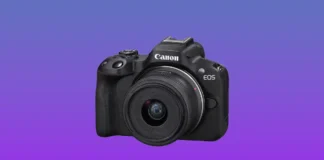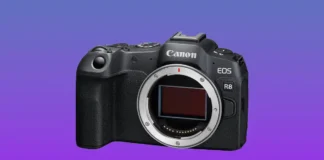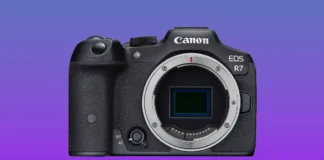Purpose of the Disclaimer Statement
The intent behind this disclaimer is to ensure that every reader understands the limitations and responsibilities tied to the use of content published on dslrcamerasearch.com. Information provided across all reviews, comparisons, guides, and opinion pieces is crafted to assist photography enthusiasts in making informed decisions. However, it is not intended as a substitute for professional consultation or legal advice.
All users of the site agree to abide by the boundaries outlined in this document as well as the related terms listed in the About Us, Our Experts, Editorial Policy, Review Policy, Cookies Policy, Privacy Policy, Terms & Conditions, and Contact Us pages. These interconnected resources provide a full framework of guidance, governance, and ethical commitments that support responsible content usage and user protection.
Clear expectations lead to responsible decisions. Readers who apply content from this site in practice do so with an understanding of its educational nature and inherent limitations.
Content as General Information Only
Information on dslrcamerasearch.com is produced solely for general informational purposes. The content is based on independent research, expert opinion, and product testing by the individuals featured on the Our Experts page. Every effort is made to ensure accuracy and objectivity, but there is no guarantee that the information presented will apply universally.
Photography equipment behaves differently depending on use case, firmware version, and manufacturing batch. What works for one photographer may yield different results for another. Guides are created using standardized testing and consistent methodologies outlined in the Review Policy, yet user outcomes may vary.
No article should be interpreted as personalized advice. Users are encouraged to perform their own research, verify details with official manufacturers, and consult professionals for decisions involving legal, financial, or commercial impact.
Readers take full responsibility for any actions taken based on content published on dslrcamerasearch.com.
Limitations of Liability
Dslrcamerasearch.com and its parent company, PhotoMedia.Digital, disclaim any liability for damages arising from the use or misuse of content provided on the site. That includes direct, indirect, incidental, or consequential damages, including loss of revenue, loss of data, or hardware malfunctions resulting from gear recommendations or setup instructions.
Every piece of content goes through review for accuracy, but mistakes may occur. Typographical errors, data updates, discontinued products, or changes in retailer pricing are beyond the control of the editorial team. Any reliance placed on information from this site is at the reader’s own risk.
Site operators are not responsible for reader dissatisfaction related to third-party products purchased through affiliate links or based on recommendations found in articles. Readers are advised to consult retailers, manufacturers, or authorized technicians before making purchasing decisions or implementing any advice.
Legal protections are outlined further in the Terms & Conditions and reinforced in the Privacy Policy and Editorial Policy documentation.
Affiliate Disclosure and Financial Transparency
Dslrcamerasearch.com earns income from affiliate links embedded in product guides, buying lists, and individual reviews. When a reader clicks on a link and completes a qualifying purchase, a commission may be earned at no additional cost to the user. This affiliate income supports the operational costs of the site, including gear testing, expert compensation, and infrastructure maintenance.
Affiliate programs do not influence how products are selected or ranked. Reviews are written and finalized before affiliate links are inserted. Contributors and reviewers do not have access to commission data, nor are they paid based on product performance.
Financial relationships are managed by a separate monetization team under PhotoMedia.Digital, ensuring a strict separation between editorial judgment and revenue decisions.
This monetization structure is clearly defined across the Editorial Policy, Review Policy, and reinforced by the broader policies such as the Cookies Policy, Privacy Policy, and Terms & Conditions.
Readers can feel confident that recommendations are made with user benefit in mind—not financial incentive.
Third-Party Content and External Links
Many articles on dslrcamerasearch.com include references or links to third-party sites, including retailers, manufacturer websites, photography communities, or firmware support portals. These links are provided for convenience and context, but dslrcamerasearch.com has no control over the accuracy, security, or policies of those external platforms.
Clicking away from dslrcamerasearch.com to visit another website constitutes an interaction with that platform under its own terms. Readers should review the privacy settings, cookies usage, and reliability of third-party content independently.
Any data entered, purchases made, or opinions read on a third-party site are not governed by dslrcamerasearch.com. Problems arising from those interactions must be resolved directly with the external provider.
Third-party links do not imply endorsement unless explicitly stated. External references are included only when they add value to the reader’s understanding.
Editorial teams periodically check link functionality and content integrity, but no ongoing responsibility is assumed for how those links are maintained or updated by the original host.
Review Content and Subjectivity
Product reviews on dslrcamerasearch.com are created using structured evaluation processes and first-hand experience. Scoring models, test categories, and ranking criteria are documented in the Review Policy. Despite this effort to standardize evaluation, reviews inherently include expert judgment.
Each reviewer brings personal experience, perspective, and preferences to their analysis. While objectivity is emphasized, interpretation plays a role—especially in areas such as design, usability, and performance trade-offs.
Readers are encouraged to consider reviews as part of a broader research strategy. Comparing multiple viewpoints, consulting product documentation, and reviewing user feedback from trusted sources can provide a more complete picture.
Dslrcamerasearch.com does not claim to deliver the final word on any product. Instead, it offers high-quality input based on expertise and structured testing, as described in the Our Experts and Editorial Policy pages.
Product recommendations are given in good faith but should not be accepted as universal truths. Gear preferences are subjective, and user results may vary.
Updates, Revisions, and Editorial Accuracy
Photography technology evolves quickly. Cameras receive firmware updates, accessories change, and manufacturers release improved versions of existing models. Reviews and product guides published on dslrcamerasearch.com are accurate at the time of publication but may become outdated.
The editorial team actively monitors articles for relevance and accuracy. Updates are made based on gear changes, user feedback, or updated testing procedures. Major revisions are clearly marked with an updated timestamp, and historical data is preserved for transparency.
Readers who spot errors, outdated information, or broken links are encouraged to submit a report using the Contact Us form. All feedback is reviewed, and valid correction requests are prioritized in the content update queue.
Editorial integrity requires ongoing attention—not just careful writing. Reviewers, editors, and compliance teams collaborate to ensure that published information remains as useful and accurate as possible.
Revision schedules follow an internal audit calendar and are informed by site analytics and reader queries.
Personal Responsibility and Reader Use
All decisions made by readers based on content from dslrcamerasearch.com are their own. Whether purchasing a camera, adjusting a photo workflow, or configuring a specific setup, users must apply their own judgment and seek expert advice when necessary.
Dslrcamerasearch.com cannot be held responsible for the outcome of user choices made on the basis of site content. Risk tolerance, shooting conditions, and product compatibility vary from case to case.
Readers should consult professionals for matters involving commercial photography investments, legal copyright compliance, or warranty disputes. Advice on the platform is informational and non-binding.
Legal recourse or consumer protection claims must be pursued through proper channels, including product manufacturers or retailers—not through dslrcamerasearch.com. Users accept this condition as part of their agreement with the Terms & Conditions, which governs all site access and use.
Legal Jurisdiction and Governing Law
Dslrcamerasearch.com operates under the legal jurisdiction assigned to PhotoMedia.Digital. All disputes, claims, or legal actions arising from the use of the site fall under the governing laws of the country or region in which PhotoMedia.Digital is incorporated.
Users accessing the site from outside this jurisdiction are still subject to the policies outlined in the Disclaimer, Terms & Conditions, Privacy Policy, and Editorial Policy.
Legal matters, including defamation claims, copyright infringement notices, or takedown requests, must be initiated through the Contact Us page. All legal communications are reviewed by the compliance and legal team at PhotoMedia.Digital.
Jurisdictional limitations, liability caps, and resolution processes are detailed further in the Terms & Conditions.
Final Notes on Policy Integration
The Disclaimer serves as one part of a larger network of policy documents that protect both readers and platform operators. These include the About Us, Our Experts, Editorial Policy, Review Policy, Cookies Policy, Privacy Policy, Terms & Conditions, and Contact Us pages.
Together, these policies ensure that every aspect of site operation—from data collection to content publishing—follows documented best practices and legal compliance standards.
Trust is a long-term relationship between publisher and reader. It starts with content that’s honest and ends with policies that support accountability.











